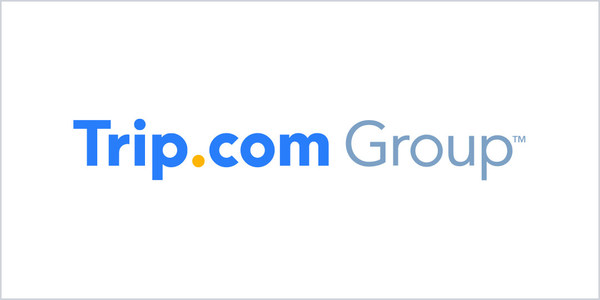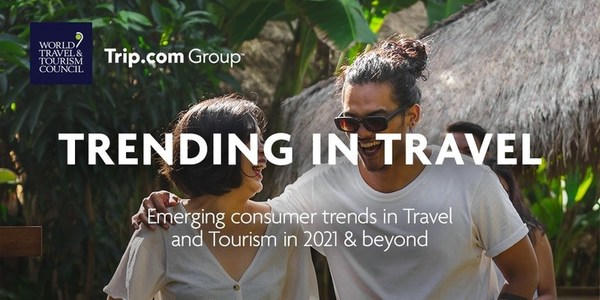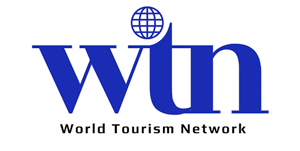 |
HONG KONG, Nov. 26, 2021 /PRNewswire/ -- Trip.com Group Limited (9961.HK, TCOM.US) and the World Travel & Tourism Council (WTTC) released theirTrending in Travel global report (the "Report"), identifying emerging consumer trends in travel and tourism for next year.
The local staycation boom is set to stay for now, as Hong Kongers' pent-up demand for travel has continued to surge during the pandemic. Trip.com, one of the sub-brands of Trip.com Group, reveals that its latest data shows staycations continued to lead the industry trend in 2021, in which the first two quarters saw a year-on-year growth of over 200% in Hong Kong's domestic hotel bookings, compared to 2019. The city's local hotel bookings in the third quarter were up 187% compared to the third quarter of 2019, growing by 108% year-on-year. Among Hong Kongers, same-day bookings and luxury hotels were the most popular staycation trends.
Insight 1: Flexible cancellation and refund policies favored; same-day bookings may not last
Same-day bookings refer to reservations made on the same day as check-in, for a one- to two-night stay. Trip.com has seen continued demand from Hong Kongers for this arrangement this year, as weekly orders for same-day bookings grew 73% in October compared to that in January. Such demand normally surged on Fridays, Saturdays, and the days before holidays, for an average room rate per night of HKD 530.
In 2019, about half of Trip.com Hong Kong users booked their stays within three days, while a quarter of them made same-day bookings; from 1 January 2021 to 24 November 2021, 76% of Trip.com Hong Kong users booked their stays within three days, while 48% made same-day bookings. Due to the pandemic and subsequent travel restrictions, Hong Kongers were unable to freely travel abroad in the past year, with most people choosing to experience staycation in Hong Kong, therefore the proportion of same-day bookings recorded a dramatic increase.
As for luxury hotels, local bookings in the third quarter grew by 213% compared to the same period in 2019, with steady growth overall in the share of luxury hotel bookings, which was up 10% compared to 2019.
Hong Kong's top 10 hotels for same-day bookings
Location | Number of hotels | Hotel |
Tsuen Wan | 3 | Nina Hotel Tsuen Wan West Panda Hotel Bay Bridge Lifestyle Retreat |
Mongkok | 2 | Royal Plaza Hotel The Cityview |
Tsim Sha Tsui | 2 | Empire Hotel Kowloon?Tsim Sha Tsui The Royal Garden Hotel |
Tin Shui Wai | 1 | Harbour Plaza Resort City |
Tseung Kwan O | 1 | Holiday Inn Express Hong Kong Kowloon East |
Shatin | 1 | Alva Hotel by Royal |
As consumers look to avoid penalties and losses, they see flexible cancellation, rebooking or refund policies as key booking conditions. The high uncertainty during the pandemic has seen an increase in shorter booking windows, with most consumers booking one to three days in advance of travel. According to Trip.com's global data, hotel booking windows also dropped from 32 days in the first half of 2019 to 10 days in the first half of 2021.
However, shorter booking windows may be a temporary phenomenon, as the Report by Trip.com Group and WTTC also notes that same-day bookings are gradually decreasing globally, while bookings made further in advance are increasing. Same-day bookings, globally speaking, saw a reduction from 39% in the first week of 2021 to 23% in the week of 25 April 2021, while bookings made 31 to 61 days in advance increased from 6% to 11%. This suggests that, when given a choice, consumers prefer to book holidays further in advance to ensure a smooth journey instead of a few days before departure, indicating that shorter booking windows will not stay popular in the long term.
There is evidence that the ongoing pandemic has led to suppressed travel demand. Holidaymakers are looking for new ways to enjoy meaningful travel experiences by working around current restrictions, including taking longer trips. In 2019, the average domestic trip length was 4.45 days and 9.22 days for international trips; In 2021, over 52% of global travellers indicated a preference for longer stays, with approximately one in four (26%) favoring to stay 10 or more nights.
Insight 2: Hong Kong, secondary cities and nature-based areas most searched destinations
As governments and businesses implement measures to proactively address Covid-19, social lives are slowly beginning to resume. In turn, traveler demand and positive consumer sentiment around travel continues to grow, giving hope to all those who depend on the travel and tourism sector for survival. Hong Kong was among the most searched international destinations in 2021, together with Bangkok, Berlin, Dubai, London, Madrid, New York, Nice, Tokyo and Toronto, according to the Report.
Other trending travel hotspots include secondary cities, rural areas and nature-based destinations, in the wake of Covid-19. Modern travelers are increasingly seeking adventure to satisfy their pent-up wanderlust, with 40% of travellers opting to explore unfamiliar destinations. Similarly, American Express found that 69% of travellers were interested in visiting lesser-known destinations with 72% hoping to support local communities through their travel, and 59% were interested in "philantourism", where they would specifically choose an experience or vacation to support a destination through tourism. This trend remains on the rise, with increasing consumer interest in sustainable travel, philantourism and rural tourism; as such, secondary cities and destinations are likely to continue growing in popularity over the medium term.
Within the luxury segment, increased savings during lockdowns has led to an expected increase in average travel expenditure, as more consumers seek luxury travel trips to unleash their travel needs. The luxury travel market, which was valued at USD 945.6 billion in 2019, is expected to reach USD 1.12 trillion in 2027. The number of daily enquiries for luxury tailor-made travel experiences on Ctrip in the first half of 2021 increased by 140% compared to the same period in 2019. Although the number of luxury travel trips will increase in the short term, as restrictions ease and consumers save less than they did during lockdowns, this trend is expected to revert and normalize later on.
Insight 3: Sustainable, wellness-based and stress-relieving trips going mainstream
While sustainability has been a priority for the travel and tourism sector for some time, it has become even more prominent through the pandemic. The Report expects sustainability to remain a trend over the long term. With the support and continued work of the public and private sectors as well as local communities, alongside increasingly clear information on which options are more sustainable, consumers are likely to continue to be more responsible as travelers. Trip.com Group research revealed over 80% of Ctrip customers supported hotels that did not provide disposable products so as to reduce single-use waste and secondary contamination. Following consumer demand for more information on the environmental impact of their flight choices, Skyscanner launched its "Greener Choice" label, which indicates which flights emit 4% less CO2 than the average emissions for a specific route. Consumers have responded positively to this label and the insights it provides, with 68 million travellers choosing the Greener Choice for their trip since 2019.
Today, the new context has enhanced appreciation of the value of mental health, giving rise to a broader understanding of wellness and increased consumer interest in improving and maintaining good mental health and overall wellness. Among consumers across 48 countries, 78% already included wellness activities when they traveled, according to a Wellness Tourism Association survey conducted in 2020 cited by the Report. With prolonged travel restrictions into 2021 and even 2022, the heightened awareness of wellness and the desire to spend more time and money on self-care, wellness and stress relief are likely to continue growing. Travelers may seek more relaxation as they plan their upcoming trips. Wellness tourism is expected to see growth in the long term. For travel providers, there is room to offer more personalized wellness experiences, from specific products to entire retreats.
So, who goes first after restrictions are lifted? The Report reveals that Millennials and Generation Z have shown the greatest willingness to travel in the short term. This younger generation is expected to continue seeking engaging and interactive content on digital and social media channels when choosing where to go and will likely book their next trips through smartphones.
Julia Simpson, WTTC President & CEO, said: "It is clear people are really looking forward to traveling again. Consumers are curious, they are looking at new destinations, 'the great outdoors' and travel that benefits the places and people they visit. As travel and tourism represents over 10% of global GDP this is good news for jobs and economies. The impact in some countries has been devastating for local communities and the Report shows that business is returning in earnest."
Jane Sun, CEO of Trip.com Group, said, "Travelers around the world have shown their eagerness to travel. Whether they are limited to domestic travel or able to access cross-border travel, we see a huge amount of pent-up demand steadily being released. To better evolve with the recovery, we must understand the changes in travelers' needs and attitudes, and as an industry adapt to emerging consumer trends in travel & tourism."
Related Links :
https://www.trip.com/newsroom/























.jpg)




.png)












